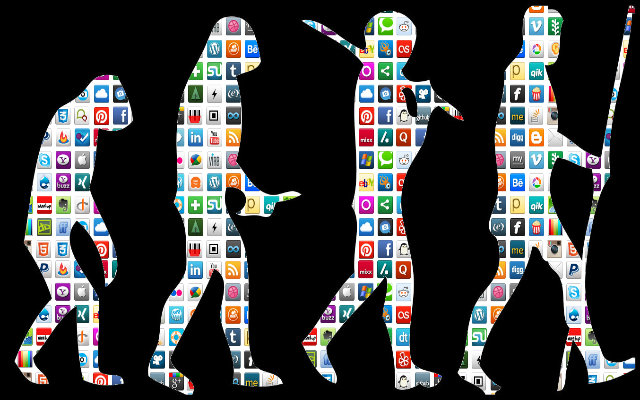
Disruption is something that creates a revolution for markets, and technology is the primary source of disruption. To say it with Brian Solis, “disruption is not something we set out to do. It is something that happens because of what we do”. So, innovation is disruption that changes human behaviors and blends together both design-thinking and system-thinking. To understand what lies behind the corner, we need to analyze the disruptive technology trends that will reshape customer experience from 2015 on.
The market scenario in which we all move is clear: the mobile mind shift has caused a transfer of power from companies to customers, giving birth to the Age of the Customer. Thanks to disruptive technologies - from smartphone to wearables and virtual reality headsets - life now blends both digital and physical environments in a continual sequence of mobile moments. Brands feel the urge to adapt to this evolution, focusing their marketing strategy on the client and taking advantage of innovations.
A couple of weeks ago Brian Solis gave a speech at the CES Brand Innovators event. The well-known digital marketing analyst presented his thoughts on what awaits us in terms of technology disruption in 2015 and 2016. The result is list of a 25 elements definitely worth exploring (you can see it in his Slideshare presentation). By his own admission, it’s not complete (it's hard to foresee what will really happen). His list is the main reference for our own: we chose the top 10 disruptive technology trends 2015 that involve the digital customer experience evolution, to understand how they influence customers’ life and your strategy.
1. Social Media - as new and old social networks become part of our ecosystem, your content marketing must ‘evolve to involve’ social relations into the customer journey map. Real-time connections with clients are more and more vital to stay top of mind.
2. Chinese Revolution - this is something we have already pointed out before. China can't be considered just a source of cheap labor anymore; it is rapidly becoming the land of innovation, driving the rise of new mobile giants and becoming the perfect field for start-ups.
3. The Internet of Things - we know that the intercommunication of smart objects will open new - and somewhat unexpected - opportunities. The next step, Solis says, is the passage from the Internet of Things to the Internet of Everything. By 2020, 40 billion devices will connect people, machines and objects.
4. Wearables - new fancy wearable devices come out every week; the market is in full swing but brands still struggle to find a place for wearables in their digital marketing strategy. The arrival of the Apple Watch (with HealthKit and Apple Pay) will probably make things clear.
5. Virtual Reality - Oculus Rift, Google’s Magic Leap, and Microsoft’s HoloLens are just few of many projects focusing on virtual and augmented reality. The future of business - retailers above all - is immersive. 3D personal environments will support purchase, engage customers and enhance the experience.
6. Content Platforms - social media sharing teaches us that content curation is the key to success in an over-crowded Internet. The new trend is ‘visual’ - Youtube, Vine, Facebook; to capture attention, content will require an entirely new approach.
7. Mass Personalization - the customer journey has a bigger value and impact than price on the purchase decision. The future of retail is the mass-customization of the shopping experience, leading to the final frontier of Me-Commerce in an Omni-Channel approach.
8. Mobile Payments - in the near future, customers will use their mobile devices to pay and brands will increase loyalty actions, and benefits connected to their app and mobile experience. Technology will change the way we pay, the currency we use and the whole payment system (Bitcoins and Apple Pay will be first in line).
9. Privacy Issue - the birth of privacy-friendly social networks is just one more sign of the concern surrounding privacy and security in an era defined by proximity marketing and Big Data. As Brian Solis says “older generations think about privacy differently. Younger generations use privacy as a currency”.
10. Beacons - these small devices represent the front line of a revolution that will transform the idea of store. Retail industry is slowly understanding the importance of connecting online and in-store experiences. The aim is to revamp new means of customer engagement, offering personalized experience and context-aware content.
Technology drives innovation but, if you don't integrate disruptive devices into a customer-centric and omni-channel view, you won't be able to evolve at the same pace of your clients. To build a strategic advantage to your organization, download the free DCX 7-Steps Checklist crafted by Neosperience, with requirements and insights for a successful digital transformation.



 Your magnifing glass to deeply understand your users and increase the value of each relatonship.
Your magnifing glass to deeply understand your users and increase the value of each relatonship. Listen to the voice of your customers deeply to understand what they truly want.
Listen to the voice of your customers deeply to understand what they truly want. The Lead Generation Platform to get leads from anonymous traffic on your website.
The Lead Generation Platform to get leads from anonymous traffic on your website.  Understand the behavior of people in physical spaces and monitor safety requirements.
Understand the behavior of people in physical spaces and monitor safety requirements. The Digital Commerce Platform designed to follow the most modern technological standards..
The Digital Commerce Platform designed to follow the most modern technological standards.. The XReality platform to tell brand and product stories by connecting physical and digital worlds.
The XReality platform to tell brand and product stories by connecting physical and digital worlds. Points, rewards, levels, badges, missions: a world of nudges to nurture your customer community.
Points, rewards, levels, badges, missions: a world of nudges to nurture your customer community. Discover all the other solutions!
Discover all the other solutions!









